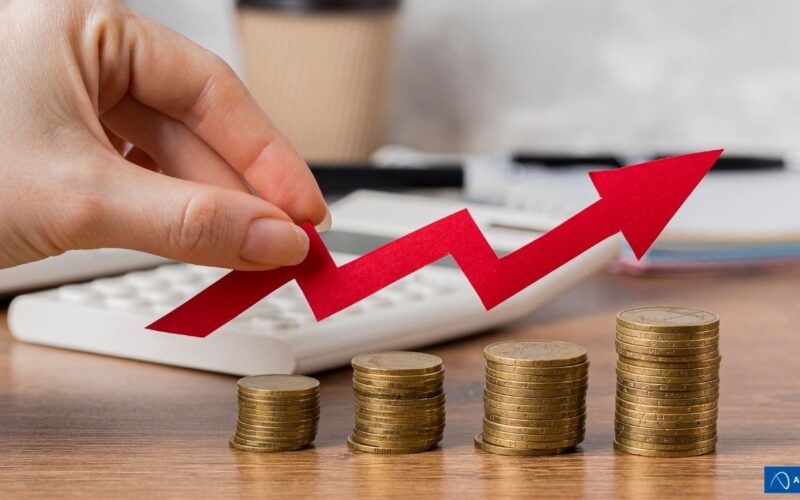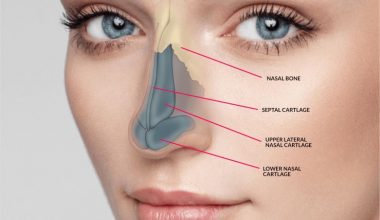Gross margin is a sort of indicator used to assess how successfully a firm or organization manages its sales, goods, and service-related expenses. It might be used to measure the success of any company. It informs a potential investor about a company’s financial health and whether investing in it is a reasonable financial risk. It’s also advantageous since it gives a company better investment options or opportunities. We are going to look at how to calculate a gross profit margin percentage and its ratio.
What Is Gross Margin?
Analysts use gross profit margin to measure a company’s financial health by estimating the amount of money left over after deducting the cost of goods sold from product sales (COGS). Gross profit margin is typically represented as a percentage of sales and is sometimes referred to as the gross margin ratio. These expenditures are accounted for as the costs of goods sold (COGS) on the income statement.
The formula for finding gross margin is
Gross margin = (Net sales – COGS) / Net sales
A company’s gross profit margin is calculated by subtracting the cost of goods sold (COGS) from net sales. The gross profit margin is the profit produced before subtracting selling, general, and administrative charges, which is the net profit margin of the company.
Importance of Gross Margin to an Organization
Gross margin is significant since it is one of several key criteria on which to establish a blueprint plan. Knowing the gross margin may enable a business to build a competitive pricing strategy, manage inventories, and find ways to save costs. Many companies utilize gross profit and gross margin as important performance measures.
Here are some other crucial performance indicators:
- Cost of goods sold
- Qualified leads per month
- Customer loyalty and retention
- Customer acquisition costs
- Net profit
- Sale revenue
- Website traffic
- Cost per click
- Employee turnover rate
- Monthly recurring revenue
How to Calculate Gross Margin Profit
To calculate gross margin, you have to first locate each formula variable, then put in the numbers. The income statement includes both net sales and costs of goods sold.
The steps of determining gross margin are as follows:
- Calculate net sales
- Calculate the cost of goods sold
#1. Calculate Net Sales
Calculate total income first for the period of time that you wish to calculate. This value is calculated by multiplying the total number of products sold by the price at which they were sold.
Assuming you sell 50 buckets of paint for $40 each, your net revenue will be $2,000
The formula for Net sales, where Q = quantity, P = price, and NR= Net revenue, is as follows:
NR= Q(P)
#2. Calculate the Cost of Goods Sold
The whole of a company’s product’s production expenditures is called the cost of goods sold (COGS). It includes direct labor and material expenditures. The figure excludes indirect costs. The costs that go into calculating the cost of products sold have considerable room for error. It differs by industry. Sales and administrative charges, marketing expenditures, and the most fixed costs are not included in the cost of items sold. The following is the formula:
COGS = Beginning inventory + Purchases during the period – Ending Inventory
Finally, combine the variables to determine the gross margin
What Counts as Good Gross Margin?
Typically, a gross margin of 10% to 20% is a good average to high gross margin to aim for, however, the optimum gross margin a firm should aim for differs by industry. Profit margins of less than 10% are common in industries such as grocery retail, assisted living, and mining. Profit margins of 15% or greater are prevalent in industries such as accountancy, automobile rentals, and dentistry. Gross margin is a measure that helps a firm determine how much it can put in again and how far it is from failing.
Here are some factors that affect gross margin:
- The cost of direct materials: The cost of your raw materials may change due to fluctuations in the prices of sellers.
- Direct labor cost: Your labor cost raises or lowers based on the quantity of labor you need to manufacture your goods.
- Method of inventory
- Sales prices/quantities: The availability of your raw materials for production would in turn affect how the cost of your products and how much you sell them.
What Does Gross Margin Indicate?
In a situation where a firm’s gross profit margin varies drastically, it may indicate bad management methods and/or inadequate products. Such swings, however, are usually acceptable when a firm makes significant operational changes to its business model. In such a case transitory volatility should not be a reason for much concern.
Price fluctuations or changes may also have an impact on gross margins. A corporation with larger gross margins likely offers its items at a higher price. However, this must be in balance to avoid the corporation losing its market audience as a result of the hike in the price set by the firm.
Generally, gross margin indicates or tracks the record of a business by assessing the sales, products and service expenses, and performance. Investors can invest safely knowing that the business has a track record of good profit turnout.
Gross Margin vs Net Margin
Another important performance metric for business success is the net margin. The primary distinction between gross and net margin is that net margin represents income or earnings after all expenditures are removed. Although both are profitability ratios used to gauge a company’s financial health.
The gross profit margin is a measure of profitability that displays the proportion of sales that exceeds the cost of goods sold (COGS), whereas the net profit margin includes a company’s entire expenditures and is a considerably more precise profitability indicator that financial analysts and investors constantly monitor. Net Margin includes taxes, debts interest, and indirect expenses.
How to Calculate Gross Margin Ratio
The gross margin ratio helps to calculate how each sale contributes to the gross margin. In other words, it’s a ratio that shows the company’s GMR as a percentage of its net sales. You compare two companies together as every company has its challenges unique to the business.
Take for example a small company with net sales of $200,000 and a bigger company with $3,000,000 of net sales. You might assume the bigger company would be doing more efficiently however, the revere can be the case where the smaller business has a higher ratio than that of the bigger business.
The formula to calculate the gross margin ratio is
Gross margin ratio = Gross margin / Net revenue
Where gross margin = Net sales – COGS
The gross margin ratio is a profitability metric that determines how profitable a company’s inventory can be sold. Higher ratios are usually preferable in knowing how well a business is performing. Higher ratios indicate that the company is profiting more from its inventory or merchandise.
There are two common ways to achieve high ratios. One option is to purchase inventory at a low cost.
The second way for retailers to achieve a high ratio is to increase the price of their products. However, you must do it with a mindset that there are other competitors and customers will shop somewhere else if your goods or services are too expensive.
A corporation having a high gross margin ratio will have high returns which will invariably be used to cover a whole lot like operating expenses eg, rent, utility, and salary.
Example of Two Business Owners
For example, Kevin’s business is a small business with net sales of $200,000 while Tom’s business has a net sales of $3,000,000. If Kevins COGS is $165,000 and Tom’s COGS is $2, 700,000
Gross margin = Net sales – COGS
Kevin: $200,000 – $160,000 = $40,000
Tom: $3,000,000 – $2, 700,000 = $300,000
One would automatically conclude that Tom’s business is doing much better and more profitable than Kevin’s business. And that’s why GMR is important.
Let’s do the maths
Gross margin ratio = Gross margin / Net revenue
Kevin: $40,000 / $200,000 = 0.2 app 20%
Tom : $300,000 / $3,000,000 = 0.1 app. 10%
This is to say that Kevin’s business has better efficiency than Toms even though toms have a higher turnout on sales due to the number of customers he has. Kevin might not have as many customers as Tom but He sells higher than Kevin thereby profiting more than Kevin in GMR.
This goes a long way to imply that Kevin’s business is a better business to invest in than Tom’s because of his high gross margin ratio.
How to Calculate Gross Margin Percentage
The following steps are to calculate the gross margin percentage:
- To begin with, take note of the company’s total revenues, which may be easily found as a line item on the income statement.
- Then, calculate the cost of goods sold either directly from the revenue statement or by adding the direct manufacturing costs, such as raw materials, labor wages, and so on.
- Subtracting the cost of products sold from total sales determines the gross profit. Total sales – COGS = gross profit
- Finally, as illustrated below, you calculate your gross margin percentage by dividing gross profit by total sales. As the name implies, it is expressed in percentages.
Gross margin Profit Percentage Formula = Gross Margin / Total Sales x 100%
Where the gross margin is (Total sales – Cost of goods sold)
Example of GMP Calculation
Consider ABC Inc. as an example of gross profit calculation. ABC Inc. is a company that makes customized wrist bracelets. ABC Inc. earned $150,000 in net revenue and other expenses at the end of the fiscal year. How will ABC Inc. GMP be computed based on the data?
COGS = $80,000
Gross Profit Percentage Formula = Gross Margin / Total Sales x 100%
Gross margin = (Total sales – Cost of goods sold)
GMP= $150,000 – $60,000 = $90,000
= $90,000 / $150,000 X 100%
GMP= 0.6 X 100%= 60%
Conclusion
Conclusively, tracking your gross margin profit could be beneficial to your business as your investors are likely to invest in your business thereby enhancing growth and development. So ensure that you’re constantly tracking them and checking your business performance.
FAQs
What is gross margin ratio?
The gross margin ratio is a profitability metric that determines how profitable a company’s inventory can be sold.
How do we calculate gross margin percentage?
To calculate gross margin Percentage = Gross Margin / Total Sales x 100%
How do i calculate my gross margin ratio?
If you want to calculate your gross margin ratio use this formula: gross margin /net revenue
How can i calculate my gross margin profit?
To calculate your gross margin profit, use this formula:
- Calculate net sales
- Calculate the cost of goods sold
Afterward, use the following formula
Gross margin = (Net sales – COGS) / Net sales
Related Articles
- Gross Profit Margin: Formula & How to Calculate the Gross Profit margin
- IS GROSS INCOME BEFORE TAXES: How To Calculate It
- Gross Pay: Definitions, Calculations and Examples (+Quick Tools)
- Profit and Loss Statement Explained!!! How to Read & Create P&L Statement






